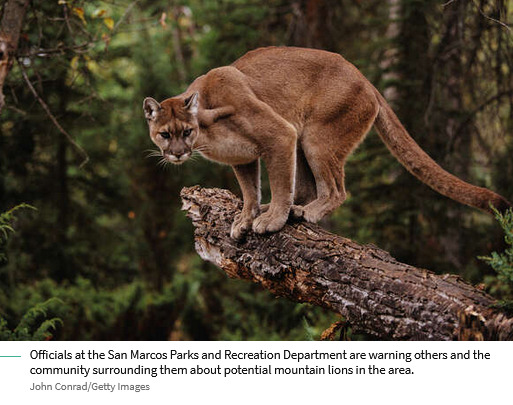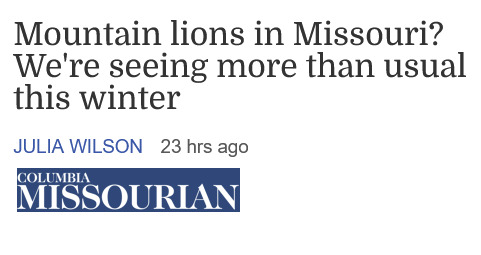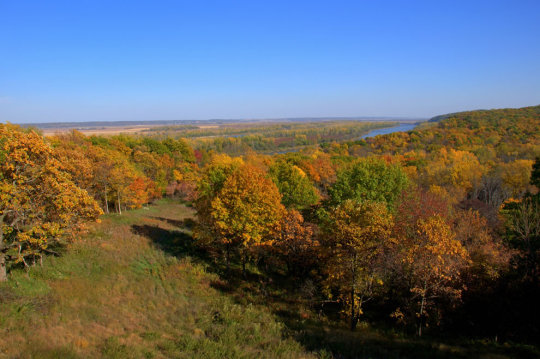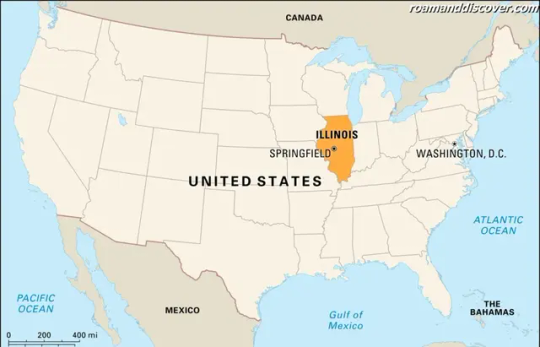#southeast missouri state
Text
Southeast Missouri State: 2022-23 Ohio Valley Men's Basketball Champions

EVANSVILLE — Southeast Missouri State men’s basketball coach Brad Korn shared a teary-eyed embrace with his parents. After an emotional 89-82 overtime win over Tennessee Tech in the United Fidelity Bank Ohio Valley Conference Tournament championship, all the family could do was shed joyful waterworks. That clinched SEMO’s first NCAA Tournament berth in 23 years and the SEMO faithful showered the players and coaches with praise.
At long last, and after four games in as many days, the wait was over. A timeline concluded with a story fitting enough for tears.
“You don’t do anything on your own,” the third-year coach said. “They get to share in that moment as well. I heard a long time ago, that surround yourself with amazing people (and) you’ll be surprised how far they can take you. I know I’m extremely blessed with these guys, this university, my family.”
The emotions of the night can’t be summed by the numbers. The six lead changes and five ties don’t come close to showing why a family cried in the stands. The Golden Eagles were about one shoe size away from snapping their 60-year danceless run.
Fifth-seeded SEMO took a two-point lead with 2.2 seconds remaining in front of 1,728 fans at Ford Center, leaving TTU needing a miracle it was painfully close to achieving. Jaylen Sebree chucked a Hail Mary pass to Diante Wood, who turned and hit an off-balance shot he thought was for the win. It was a similar play to that which ended Eagles’ coach John Pelphrey’s playing career 31 years prior.
Bucket, but his foot was on the 3-point line — “buzzer tier,” Korn called it. He sent TTU to overtime instead of the dance. Korn’s tears were nearly for a loss and Tech’s wait was almost over.
SEMO players were in tears but quickly needed to dry them. There was still overtime.
“They said, ‘Hey, remember this feeling. We’ve got five minutes to not feel this way,’” Korn said of Phillip Russell, Chris Harris and Dylan Branson. “I give them all the credit in the world for that and having the perseverance and the grit and the toughness to get it done.”
Tears fell again, but for joy and accomplishment on the Redhawks’ end. Wood watched from the opposite baseline after being an inch from ending a generational waiting period.
“I wanted to soak it all in, see how it felt, the pain,” Wood said. “(I can) come back next year, know about the feeling. Don’t want to be in that position again.”
Four games in four days. Austin Peay in 2016 was the only other team to win the OVC tournament after playing on opening night. The odds were against SEMO. Korn knew it but presented a challenge to his team before departing for Evansville.
Believe they can win the championship. Pack for four days.
Those were the options, or the players were instructed not to board the bus. That resulted in a 23-year wait ending and the Redhawks heading to March Madness.
“The guys have had a calmness, a steadiness about them all week,” Korn said. “The moment was not too big.”
“Everybody always had the right attitude,” Harris said. “We don’t want to be the outlier. It’s been so long since we actually won a championship and we see other teams winning championships all the time, so figured it’s our turn to step up.
It feels good to bring a basketball championship back home.”
A daunting task lies ahead for Korn and his Redhawks. They’ll likely be paired as a 16-seed against one of the tournament favorites or in the First Four to have the chance at playing one of the top teams. But Korn has experienced the Madness, albeit as an assistant at Kansas State.
“The balls are different, the floor is different, the arena — everything is different,” Korn said. “It’s going to be different coaching in the NCAA Tournament than it was as an assistant.
“This is what we do. This is what these guys do. To be able to have that, these guys are going to be able to see and experience, it’s at a different level. You literally walk around like royalty, people treat you so well. I’m looking forward to it.”
Amidst all the celebration, cheering and jubilation, it could be easy to forget how close it was to going the other way around. An inch, a shoe size, a step — one of those things changing is the difference between SEMO going to the tournament and watching the opposition celebrate; between tears in celebration and those in agony.
In essence, it was everything college basketball is supposed to be.
“If that’s not the definition of March Madness,” Korn said, “I don’t know what is.”
0 notes
Text



SEMO Softball
#Southeast Missouri State University#SEMO#SEMO RedHawks#college softball#softball girls#athlete#female athletes#college athlete#college girl#bikini#athletes in bikinis
310 notes
·
View notes
Text
it drives me crazy how every time some random pundit pushes the "Don't Go To Some Snobby Elite Private School, Go To A Salt-Of-The-Earth Public School Instead" line:
1) they themselves invariably went to a Snobby Elite Private School and materially, obviously benefited from this (yet are somehow oblivious to that fact!), and
2) the "salt-of-the-earth" public school they choose to name is, like: university of michigan. or, university of north carolina. y'know, internationally well-regarded schools whose tuitions are just as bonkers & just as hard to get into if you're applying from out of state. like come on
18 notes
·
View notes
Text
Junior occupational therapy major and Delta Delta Delta (Tri Delta) Homecoming chair Mikayla Beachle organizes the pomping and painting supplies in the basement of the Tri Delta off-campus house. "It's rewarding to just see everybody working together," Beachle said.
#trideltasemo#Southeast Missouri State University#SEMO#Cape Girardeau#Delta Delta Delta#TriDelta#Tri Delta#DELTA DELTA DELTA#Phi Mu Chapter#ΔΔΔ#sorority news#sorority#sororitygirls#sorority girls#sororitylife#sorority life#sisterhood#greek life#go greek
0 notes
Text
For the second week in a row, Republicans in state legislatures are making the interesting choice of fighting for child marriage. In Missouri, where children 16 or older can marry with parental permission, a bill to prohibit anyone under age 18 from getting a marriage license easily cleared the Republican-controlled Senate 31 to one last month. But now, the bill can’t get out of committee in the state House because seven out of 14 committee members are House Republicans who oppose the bill.
Those opponents include Rep. Hardy Billington (R), who insists without any evidence or logic whatsoever that banning child marriage will lead to a spike in abortions, even as abortion is totally banned in the state. “My opinion is that if someone [wants to] get married at 17, and they’re going to have a baby and they cannot get married, then chances of abortion are extremely high,” he told the Kansas City Star this week. Earlier this week, I also had to write about a different Republican lawmaker in New Hampshire who used the same argument against a bill to ban child marriage. This doesn’t make sense—if someone of any age is pregnant and doesn’t want to be, they’ll probably seek abortion care; this actually has nothing to do with marriage.
Another opponent of the bill, Rep. Dean Van Schoiack (R), told the Star that he opposes the bill because he knows someone who got married as a 17-year-old girl and is still married. “Why is the government getting involved in people’s lives like this?” Van Schoiak said.
Of course, if we’re bringing anecdotes and lived experience into this, I think I trust state Sen. Holly Thompson Rehder (R), who introduced the bill, a little more than Van Schoiack. “As a child that did get married, I would say I have a lot more insight to this issue than what he does,” Rehder said of Van Schoiack. Per the Star, Rehder got married at 15 to a 21-year-old, while her sister at 16 married her 39-year-old drug dealer. “The government does tell people when they can get married because we do have an age limit right now. The fact that [Van Schoiack] feels that it’s OK for a parent to make a decision for a child, that is a lifetime decision, is offensive.”
At this point, I would like to note that Rehder, who is currently running for lieutenant governor, might be right about this one thing, but is wrong about… pretty much everything else. Rehder supports the state’s total abortion ban and campaigned on a pledge to promote “the Trump Agenda” in her district in Southeast Missouri.
Nonetheless, if her bill doesn’t make it to a vote before the end of the legislative session on May 17, Rehder, who’s currently running for lieutenant governor, said she plans to introduce it as an amendment attached to another bill. She told the Star she’s confident that brought to the floor for a vote, the bill would have a majority…but right now, it’s simply being held up by its Republican opponents on committee.
Rehder’s bill comes after Missouri lawmakers in 2018 raised the state’s minimum marriage age to 16 with parental approval following backlash at the time over how many 15-year-olds in the state were being married. Currently, Missouri prohibits marriage between a minor and someone who is 21 or older, similar to the state’s statutory rape laws that prohibit sexual intercourse between someone 21 and older and someone under 17. This is all pretty needlessly confusing, but what isn’t confusing is that this is part of a pattern of Republican lawmakers going to bat for child marriage—from the state representative in New Hampshire who insisted that “ripe” and “fertile” teens should be able to marry, to a different Missouri lawmaker who last year declared that 12-year-olds should be able to get married because he personally knew someone who married at 12 (I mean, I hope they’re doing well today, but somehow, I, err, have my doubts…).
Experts and advocates against child trafficking have long pointed to how laws that permit child marriage put them at greater risk. The bill in Missouri’s legislature is notably part of a bipartisan effort, introduced by Rehder and Democrat Lauren Arthur. But despite Rehder’s best efforts, their bill is being blocked by members of her own party, even as Republican politicians have spent the better part of the last few years escalating their baseless and fearmongering smears of queer people as child sexual predators. As it turns out based on the political affiliations of every lawmaker fighting tooth-and-nail for child marriage (and, consequently, adult predators’ ability to marry children), the call might just be coming from inside the house—the Missouri state House, specifically.
#us politics#news#republicans#conservatives#gop#republican family values#child marriage#abortions#jezebel#Kansas City Star#Hardy Billington#Missouri#New Hampshire#Dean Van Schoiack#Holly Thompson Rehder#Lauren Arthur#2024
41 notes
·
View notes
Text
82 notes
·
View notes
Text
Big week for news about “mountain lions wandering back into historic habitat where they were once persecuted to extinction” in February 2023.
---
Central Texas:


Headline and screenshots from: Priscilla Aguirre. “Potential mountain lion sighting in San Antonio area raises awareness.” My San Antonio. 14 February 2023.
Excerpt from this article: Officials at the San Marcos Parks and Recreation Department are asking others and the surrounding areas to be cautious about potential mountain lions in Central Texas. Officials said the message comes after the department received a call about a potential sighting of a mountain lion at Upper Purgatory Creek Natural Area in San Marcos on Sunday, February 12. [...] In Central Texas, it’s extremely rare to see a mountain lion in person, according to a report from the San Antonio Express-News. [...] Only one mountain lion has been confirmed in Bexar County in the past decade, on November 24, 2013, according to TPWD. [End of excerpt.]
---
Great Plains and Nebraska:

Headline and screenshot from: Damon Bennett. “Nebraska mountain lion now looking for a name after 700-mile journey.” Lincoln Journal-Star. 16 February 2023.
Excerpt from this article: A Nebraska mountain lion that found itself in a sanctuary in Indiana after a 700-mile journey through four states is now looking for one last souvenir: a name. Back in the fall, the big cat made its way from the scenic Niobrara River valley all the way to suburban Springfield, Illinois, according to the GPS tracker that Nebraska Game and Parks had tagged it with a year prior. "A lot of people were watching him," said [the director of an “exotic feline rescue center”] in Center Point, Indiana, where the mountain lion has been since October. When the lion overstayed its welcome near Springfield, it was sedated by federal wildlife officials, who offered to return it to Nebraska. Nebraska declined.’ [...] "I'm incredibly impressed with this animal; he crossed both the Missouri and Mississippi rivers [...]." [End of excerpt.]
---
Ozarks and Missouri:

Headline and screenshot from: Julia Wilson. “Mountain lions in Missouri? We’re seeing more than usual this winter.” Columbia Missourian. 16 February 2023.
Excerpt from this article: Footage from a trail camera taken Jan. 3 confirmed that a roaming mountain lion made a rare appearance in northern Boone County. Since then, the Missouri Department of Conservation documented three additional sightings around the state last month — one in Callaway County, another in Montgomery County and a third that was hit by a vehicle south of St. Louis. Reports of mountain lions, also known as cougars, pumas and panthers, have increased over the past decade in the state. Between 2013 and 2022, a total of 65 were counted around Missouri. Compare that to the years between 1994 and 2006, when only 12 were spotted. [...] The animals may come from an established colony in the Black Hills, cross Nebraska and wander into Missouri, according to the Kansas Department of Wildlife and Parks. Missouri’s extensive forest coverage, which includes 35% of state acreage, then becomes an ideal destination for the animals. Mountain lions have roamed Missouri since pre-settlement times. Their range crosses the western hemisphere from Canada to southern Chile. [...] Although they are seen across the state, over half of all sightings have been documented within 40 miles of Mark Twain National Forest in southeast Missouri. [...] Trophy hunting by early colonists wiped out most of the population east of the Mississippi River. [...] Except for the recent encounter in Franklin County where a lion was hit by a vehicle, the last documented human contact occurred in December 2021 during another vehicle collision. [End of excerpt.]
---
For reference:

205 notes
·
View notes
Text
Warbler Showdown; Bracket 8, Poll 3


Northern Waterthrush (Parkesia noveboracensis)
IUCN Rating: Least Concern
Range: migratory; breeds from Alaska all the way to Newfoundland, with some populations dipping into Montana and the Northeast states. Overwinters in the Greater Antilles, and from southern Mexico to Colombia and Venezuela.
Habitat: breeds in areas of dense ground cover where surface water is present, such as bogs, wooded swamps, and riparian thickets. Overwinters in similar habitats, but can also be found heavily associated in mangroves.
Subspecies: none
Louisiana Waterthrush (Parkesia motacilla)
IUCN Rating: Least Concern
Range: migratory; from the Northeast states down the Appalachian mountains and into the Southeast, as well as the Mississippi river drainage from Missouri down to Texas; overwinters in the Greater Antilles, as well as Mexico down through the very top of Colombia.
Habitat: found most consistently around streams, preferring those in close-canopy, hilly, deciduous or mixed-evergreen forests, both during breeding and overwintering seasons.
Subspecies: none
Image Sources: Northern (Kyle Blaney) Louisiana (Malcolm Kurtz)
#NWW Showdown#northern waterthrush#louisiana waterthrush#parkesia#parulidae#passeriformes#polls#bird poll#animal poll
18 notes
·
View notes
Note
If you get this, answer w/ three random facts about yourself and send it to the last seven blogs in your notifs. anon or not, doesn’t matter, let’s get to know the person behind the blog! 🩷
I'll give different answers.
While I won't specify where exactly, I live in southeast Iowa. It's acres, cows and gas-stations over here.
I've been all over the country. Arizona, two different islands of Hawaii, California, Texas, Missouri. Not every single state, of course; but I've moved around enough to say that I never really settled down in any of those places. I'm here to stay with Iowa, though.
At the risk of sounding incredibly self-pitying, I never really had friends growing up and even now some people that I'm friendly are just that. I was shy as a kid and, while I'm more out-going now, I've preferred being in my own head, "Lala Land 24/7" as some people say; between that and moving a lot, there wasn't much room to make friends during my childhood. Tumblr has helped me in quite a ways, though, and I'm glad I decided to join this platform and Ao3.
6 notes
·
View notes
Text

Taken in Indian Cave State Park southeast Nebraska over-looking the Missouri River Valley
8 notes
·
View notes
Photo

Dr. Larry Grisvard, Southeast Missouri State University, 1975.
20 notes
·
View notes
Text
A southeast Missouri boarding school under fire for allegedly abusing students has shut its doors and is facing additional investigations, The Star has confirmed.
Lighthouse Christian Academy, run by ABM Ministries near Piedmont, has notified the Missouri Department of Social Services that it is “officially closed,” according to a letter obtained by The Star.
The action comes as the state’s child welfare agency is investigating whether hotline calls about the school were properly investigated.
Robert Knodell, director of DSS, confirmed to The Star that his agency is working to determine how complaints to the state child abuse and neglect hotline about Lighthouse Christian Academy were handled by his department.
Sources, including former students, have told The Star that numerous complaints were submitted in the past 15 years but nothing came of them.
“We want to make sure that our team members are using the appropriate judgment, making the appropriate calls moving forward,” Knodell said. “Our inquiry and investigation is ongoing, looking at those facts in their entirety. We have to review each of those situations.”
The social services agency is also looking to see, Knodell said, whether a 2021 law implementing some regulations for Missouri’s unlicensed boarding schools is strong enough to prevent or identify abuse in such facilities.
The Star first wrote about allegations involving Lighthouse Christian Academy in Wayne County last month after five boys ran away in less than a four-week period. Since then, owners Larry and Carmen Musgrave, ages 57 and 64, have been charged with kidnapping, and another staff member, Caleb Sandoval, 22, has been charged with the assault of a child.
All boys are now gone from the school, authorities said, after parents were told earlier this month to pick up their sons within 48 hours. The school wrote to the state earlier this month about Lighthouse Christian Academy’s future.
“As of March 6th @ 5 p.m., 2024 ABM is officially closed,” the letter to DSS read. “All staff have also been dismissed.”
Wayne County Sheriff Dean Finch said he expects more charges as he continues to investigate. He has interviewed dozens of former students.
Several hotline calls made in late January
What still isn’t clear is what happened after concerns about the school were reported to Missouri’s abuse and neglect hotline.
Former students said if only someone had listened long ago, more students wouldn’t have been subjected to what they call mental and physical abuse.
The most recent calls to the hotline were made in late January when two boys — ages 12 and 14 — ran away from the school. After the two were initially helped by Cierra Osborn and then other neighbors, several people called the hotline.
Those two boys told the residents that they were hit for not doing chores fast enough and were berated by staff. At least two neighbors told The Star that they called the hotline, but to their knowledge nothing was done.
Courtney Hall, who lives about two miles from the school, said she when she initially called the hotline she was told that several people had already reported the incident and that it would be noted that she’d called. The next day, she said she called back and was told the information provided to the state wasn’t enough to meet the criteria for an investigation.
A sheriff’s deputy also called in late January about the runaways.
“We certainly appreciate the involvement of the folks in Wayne County in this situation,” Knodell said. “The ability to address ongoing issues is much greater when there’s full cooperation across the spectrum.”
That Jan. 28 incident, as well as other recent runaway cases, led authorities to talk with former students. And the information they shared led to the kidnapping charges and other counts that are expected.
“That was the domino effect, and it just went from there,” Finch said. “I don’t know the word I’m looking for to be honest with you. It’s just sad.”
What’s frustrating, the sheriff said, is that several students told him they tried to tell their parents about the alleged abuse at the school, but in many cases they weren’t believed.
“Don’t get me wrong, I’m not trying to blame anybody or whatever,” Finch said. “But the parents of some of these kids don’t care. That’s my personal opinion, and you can quote that all day long.”
‘Angry that it could happen’
Lighthouse Christian Academy — for boys 10 and older — is the latest unlicensed boarding school in Missouri to face scrutiny amid allegations of abuse.
Since September 2020, The Star has investigated several schools, and the lack of regulations for them in the state, and has spoken to more than 80 students who attended facilities in southwest Missouri.
That investigation led to lawmakers proposing legislation that they passed in 2021. The hope was that the new law would prevent further abuse and allow the state to implement at least some regulations for the unlicensed facilities.
Hearing about allegations and criminal investigations at yet another school has frustrated some lawmakers.
“I was shocked and angry that it could happen,” said Rep. Rudy Veit, R-Wardsville, a co-sponsor of the 2021 legislation. “It’s a great concern, because we were supposed to be at least making major steps to prevent this from happening. I thought we at least had new cases not arising, and turns out, these people went under the radar.
“And the whole object was that they not be under the radar and that they be overseen so we at least know that if something’s going on, we become aware of it.”
Veit said he hopes DSS will do a “thorough investigation” to see if the new law is strong enough to keep alleged abuse and other wrongdoing from happening inside Missouri’s unlicensed boarding schools.
“If not, what changes do we need to make?” Veit said. “I want them (DSS) to do their investigation, which I understand they’re doing, so we can make a determination — is this something that should have been prevented under existing law, or is there something we need to do to prevent this from happening?”
2 notes
·
View notes
Text

Southeast Missouri State Softball
#Southeast Missouri State University#SEMO#SEMO Redhawks#softball girls#college softball#athlete#female athletes#college athlete#college girl
52 notes
·
View notes
Text
youtube
A drunk-driving Republican North Dakota legislator abuses police with a xenophobic and homophobic rant.
Remember when the GOP used to be the "party of law and order"? ⌛️
'He's the product of hate': Outrage erupts as bodycam footage shows Republican Nico Rios hurling homophobic slurs during DUI arrest
WILLISTON, NORTH DAKOTA: A North Dakota state lawmaker who serves on a legislative committee overseeing law enforcement unleashed a shocking homophobic and racist tirade when a police officer arrested him for drunk driving last week.
Republican Rep. Nico Rios of Williston faces charges of driving under the influence and refusing to submit to a chemical test after Williston police pulled him over on December 15 for failing to stay in his lane.
Body camera footage released this week shows Rios hurling slurs and insults at the arresting officer in an expletive-laced rant during the traffic stop and subsequent booking, as reported by Daily Mail.
[ ... ]
The body cam footage captures Rios' shocking rant, which included repeated homophobic slurs aimed at officer Welch in his patrol car and the booking station at the jail. Rios also questioned Welch's English accent, ignorantly implying he was an immigrant terrorizing "brown people."
"You come from f****** London f****** England to terrorize brown people, you b******," Rios drunkenly slurs. He goes on to accuse officer Welch of "selling his soul to globalism" and claims immigrants are "coming to your country and raping your women."
He also threatened Welch, saying "You need to make a paycheck. You're ruining my life so you can make a paycheck you little b****." Rios further uses multiple homophobic slurs, calling the officer a "f*g," "pathetic and weak" and a "motherf******."
Rios has an interesting employment history.
The 30-year-old Rios, who was elected to his first term last year, has deep ties to the national Republican Party. Before moving to North Dakota, he worked in Sen. Ted Cruz's Washington DC office.
I wonder if Ted ever invited Nico to vacation with him in Cancún. 😛
Checking Rios's legislative site, he's remarkably unremarkable. Now that he's charged with a criminal offense, he's a candidate for Trump's cabinet if the latter succeeds in returning to the White House.
North Dakota seems to have 2-person legislative districts for its lower chamber. Rios is from the 23rd District; it borders the Missouri River on the south and southeast and Montana on the west.

If there are a lot of drunken and abusive homophobes in the 23rd, Rios is a cinch for re-election.
82 of the 94 members of the ND House are Republicans. If they don't toss Rios out of the caucus and demand his resignation then that would be in keeping with the national GOP's attitude regarding law and order.
#republicans#nico rios#drunk driving#law and order#abusing police officers#north dakota#lgbtq+#homophobia#xenophobia#ted “cancún” cruz
2 notes
·
View notes
Text
youtube
Sorority recruitment! | Southeast Missouri State University
Published by Alexandra Silvey
#Southeast Missouri State University#SEMO#Cape Girardeau#Tri Delta#DELTA DELTA DELTA#trideltasemo#Phi Mu Chapter#ΔΔΔ#sorority#sororitygirls#sorority girls#sororitylife#sorority life#sisterhood#greek life#go greek#philanthropy#sorority recruitment#panhellenic#orientation#sorority rush#Youtube
0 notes
Text
Illinois

Illinois, a state located in the Midwestern region of the United States, is known for its diverse landscapes, rich history, and vibrant culture. It is the sixth most populous state in the US, with Chicago as its largest city and Springfield as the state capital. Illinois is bordered by Wisconsin to the north, Indiana to the east, Kentucky to the southeast, Missouri to the west, and Iowa to the northwest.
The state of Illinois covers a total area of 57,915 square miles and has a varied terrain, including vast farmlands, dense forests, rolling hills, rugged bluffs, and pristine lakes. The state's economy is heavily based on manufacturing, agriculture, and services, with major industries including financial services, healthcare, transportation equipment, and food processing.
Illinois has a rich history and heritage that dates back to ancient times. The region was inhabited by various indigenous tribes, including the Cahokia, Potawatomi, and Illiniwek, before the arrival of European explorers and settlers in the 1600s. The French established the first settlement in Illinois, and it later became part of the United States in 1818.
The state has a diverse population of around 12.7 million people, with a rich cultural tapestry of ethnicities, religions, and languages. English is the most widely spoken language in Illinois, followed by Spanish and other languages spoken by immigrants. The predominant religions in the state are Christianity, Judaism, and Islam.
Illinois is also home to many stunning natural attractions, such as the Shawnee National Forest, Starved Rock State Park, and the Lincoln Trail State Park. The state also boasts a rich cultural heritage, with world-class museums, art galleries, and music venues. Illinois is famous for being the birthplace of many notable public figures, including Abraham Lincoln, Ronald Reagan, Ernest Hemingway, and Oprah Winfrey.
If you visit Illinois, you will experience the warmth and hospitality of the locals, enjoy the natural beauty and stunning vistas of the state's countryside, and immerse yourself in the rich cultural heritage and diversity that the state has to offer. Whether you are a nature lover, a history buff, or a foodie, Illinois has something for everyone.

Etymology
The name 'Illinois' comes from the French rendering of the Algonquian language word for the Illinois Confederation, 'ilinwek' or 'illiniwek.' This name refers to a group of Native American tribes who lived in the region even before the arrival of European explorers. The meaning of 'ilinwek' is disputed, but it is commonly translated as 'tribe of superior men,' 'men of men,' or 'best people.'
The Illinois Confederation was a loose alliance of several tribes, including the Cahokia, Kaskaskia, Peoria, and Tamaroa, among others. They inhabited the region around the Mississippi River, extending from present-day Illinois to parts of Wisconsin and Missouri.
The name 'Illinois' was officially adopted as the state's name when it achieved statehood in 1818. It was chosen by the state's first governor, Shadrach Bond, who sought to honor the Native American tribes who had long inhabited the land.
History
Illinois has a rich and diverse history, dating back to precolonial times. Before European settlers arrived, the area was home to indigenous peoples, including the Illini, Miami, and Potawatomi tribes.
In the years that followed, Illinois played a key role in the French and Indian War and the American Revolution. The state became part of the Northwest Territory in 1787 and was officially recognized as a state in 1818.
Throughout the 19th century, Illinois grew rapidly, becoming a major hub for transportation and industrial development. The state was also notable for its involvement in the Underground Railroad, helping slaves escape to freedom in the north.
In the early 20th century, Illinois was a key player in the labor movement, with major strikes and protests taking place in Chicago and other urban centers. The state also played a significant role in both World Wars, supplying troops and resources for the war effort.
In the years that followed, Illinois continued to grow and evolve, with major advancements in industry and technology. The state was also marked by several notable political scandals, including the impeachment and removal of Governor Rod Blagojevich in 2009.
Today, Illinois is a vibrant and diverse state, with a rich cultural heritage and thriving economy. Its history is woven throughout the fabric of the state, from its urban centers to its rural communities.
Geology
Illinois has a diverse geological landscape with various regions that all have their unique formations. One of the most notable geological features in Illinois is the Ozark Dome, a subterranean formation characterized by underground mines of lead, zinc, and other minerals. In contrast to this, the northwest and north-central region have mostly glacial formations such as drumlins, eskers, and moraines, created by the last ice age.
The state has a rich history of coal mining that has left behind abandoned underground mines throughout the central part of the state. These coal deposits are from the Pennsylvanian period and are believed to have been formed about 300 million years ago. The coal-rich areas in Illinois are where the land is flat and the soil is fertile.
Illinois has also been known to produce natural gas and petroleum, which has played a significant role in the industrialization and economic growth of the state. The reserves of natural gas and petroleum are found primarily in southern Illinois, in the Illinois Basin.
The state has an extensive system of rivers and lakes, including the Mississippi, Illinois, Ohio, and Wabash rivers, that have played a significant role in shaping the geological makeup of Illinois. The contributions of these rivers and lakes have been significant in creating the rich farmland that exists in the state, aside from providing transportation for goods and services.
the state of Illinois has a diverse geological landscape that ranges from underground mines that are rich in minerals to the flatlands that are suitable for farming. The state's history has been shaped by the natural resources found within its borders, with coal, natural gas, and petroleum being significant contributors to Illinois's industrialization. The region's numerous rivers and lakes have also had a remarkable impact on shaping the landscape and creating the fertile soil necessary for farming.
Geography
Illinois is a heavily populated state located in the Midwest of the United States. It is surrounded by Indiana to the east, Missouri to the west, Wisconsin to the north, and Kentucky to the south. The state is divided into three distinct regions: the Central Plains, Shawnee Hills, and the Illinois Ozarks. The Central Plains region consists of gently rolling hills and vast prairies with fertile soil, while the Shawnee Hills region is characterized by hills, bluffs, and forests. The Illinois Ozarks region, on the other hand, consists of rugged hills, ridges, and deep ravines.
Illinois also houses several water bodies, including the Mississippi River, the Ohio River, and the Wabash River. The state also has many lakes, including Lake Michigan, which is the fifth-largest freshwater lake in the world by volume. The Chicago River also meanders through downtown Chicago to create an impressive sightseeing opportunity.
The land use in Illinois is predominantly agricultural, with over 75% of the land used for farming purposes. The state is one of the largest producers of corn and soybeans in the United States. In addition to agriculture, the state is also known for its manufacturing and industrial capabilities. The major industrial centers in the state include Joliet, Rockford, Peoria, and Bloomington-Normal.
Over the years, there has been a significant increase in urbanization and suburbanization in Illinois, primarily near Chicago, which is the largest city in the state. The state ranks fifth in the country in terms of urbanization, with over 87% of the population residing in urban areas.
The state has an extensive transportation infrastructure network, including roads, highways, railways, and airports. The Illinois Tollway system covers over 292 miles of roadway to connect the major cities and metropolitan areas in the state. The Chicago O’Hare International Airport is the busiest airport in Illinois and one of the busiest in the United States. It serves over 83 million passengers every year.
Illinois is also home to several protected areas and parks, including the Shawnee National Forest, the Illinois Beach State Park, the Starved Rock State Park, and the Lincoln Park Zoo. These parks offer visitors a glimpse of the state's natural beauty and biodiversity and are popular destinations for hiking, camping, and wildlife watching.
the physical geography of Illinois is an interesting mix of rolling hills, deep ravines, forests, and water bodies. The state's land use is predominantly agricultural, with a growing urbanization trend near major cities. It has an extensive transportation network and offers numerous recreational and entertainment options for tourists. Illinois is indeed one of the most geographically diverse and culturally rich states in the United States.
Ecology
Illinois is a state filled with diverse ecology, with several major biomes present within its borders. Forests, grasslands, wetlands, rivers, lakes, and streams are all habitats for a wide variety of plants and animals. About 25% of the state remains forested, with the majority of it located in the southern part of the state.
The state's wetlands play a crucial role in regulating water levels, filtering pollutants, and providing habitat and food for many species. Sadly, many of these biomes have been severely impacted by human activities such as development and farming.
The Illinois Department of Natural Resources (IDNR) works tirelessly to preserve and maintain these natural areas. They have established numerous state parks, nature preserves, and wildlife refuges to protect habitats and support wildlife populations. the state has several programs to provide financial and technical support to landowners who wish to participate in conservation efforts.
One of the most significant conservation challenges in Illinois is combating invasive species that threaten many of the state's native ecosystems. The state has established protocols to identify and remove these species, including the use of prescribed burns, herbicides, and other methods.
The state is also working to address water quality concerns, particularly in the Illinois River. Agricultural runoff, sewage treatment discharge, and other pollutants have had a damaging effect on the river's ecology. The state is implementing a variety of measures to improve the water quality, including guidelines for agricultural practices, new wastewater treatment facilities, and river restoration projects.
The state also recognizes the importance of protecting its endangered and threatened species. The Illinois Endangered Species Protection Board is responsible for developing and implementing plans to conserve and recover species on the brink of extinction in the state. Several species, such as the gray wolf, black bear, and mountain lion, have been eliminated from the state and are being considered for reintroduction.
the state encourages residents and visitors to participate in conservation efforts and education programs. These programs provide opportunities for people to learn about the state's ecology, wildlife, and natural resources and how they can help protect them.
Biodiversity
Illinois boasts a diverse array of flora and fauna, with both native and introduced species inhabiting the state. Several types of forests, including oak-hickory and beech-maple, cover much of the state. The Illinois River, Lake Michigan, and other waterways are home to several species of fish, turtles, and amphibians.
Moreover, Illinois' native plant life provides an important habitat for a variety of animals. Wildflowers such as purple coneflowers and wild lupine are often found on the state's prairies, providing food and shelter for animals ranging from bison to butterflies. Threatened or endangered species such as the Illinois mud turtle and Hine's emerald dragonfly call the state home, requiring conservation efforts to protect their habitats.
In addition to the native species, Illinois has seen an influx of non-native species. Some species have been deliberately introduced due to their perceived benefits, while others have arrived unintentionally through human activities such as shipping and travel. However, non-native species can have negative impacts on the environment and native species, often outcompeting and marginalizing them. As a result, Illinois has regulations in place to prevent the introduction and spread of non-native species.
Protecting Illinois' biodiversity is necessary to maintain the state's ecological health and promote its economic wellbeing. The state has established several programs to address conservation and restoration efforts, such as the Illinois Wildlife Action Plan and the Illinois Nature Preserves Commission. the state has regulations in place to protect threatened and endangered species and their habitats, as well as to prevent the introduction of non-native species that may threaten the native ecosystems.
Furthermore, Illinois residents also play a critical role in the protection of the state's biodiversity. For example, homeowners can plant native species in their yards to provide habitat and food for local wildlife and can take steps to reduce their carbon footprint, aiding in the fight against climate change. Conservation organizations and volunteer groups also provide opportunities for citizens to get involved in restoration and conservation efforts across the state.
Illinois' biodiversity is essential to its ecological and economic health. The state's rich natural resources provide habitat for a diverse array of native species, as well as several non-native species. However, conservation efforts are necessary to protect these resources and prevent the spread of non-native species. Through both governmental and individual actions, Illinois can continue to promote its ecological wellbeing while supporting its social and economic interests.

turtles
Climate
Illinois has a diverse climate due to its location in the central United States, bordering the Great Lakes region and stretching south to the Mississippi River. The state experiences all four seasons, with hot summers and cold winters.
In the northern part of the state, the climate is considered humid continental, characterized by warm summers and cold winters with heavy snowfall. Average temperatures in January, the coldest month, range from 24°F to 30°F (-4°C to -1°C), while July, the warmest month, sees averages from 64°F to 82°F (18°C to 28°C).
In central Illinois, the climate is also humid continental, but with warmer temperatures throughout the year. Summers are hot and humid with occasional thunderstorms, while winters are milder with less snowfall. Average temperatures in January range from 25°F to 33°F (-4°C to 0°C), while July sees averages from 65°F to 85°F (18°C to 29°C).
Southern Illinois is located within the humid subtropical climate zone, characterized by hot summers and mild winters with occasional snowfall. Average temperatures in January range from 32°F to 40°F (0°C to 4°C), while July averages range from 69°F to 89°F (21°C to 32°C).
Illinois sees its fair share of severe weather, including thunderstorms, tornadoes, and even blizzards in the winter. The state averages about 35 to 45 thunderstorm days per year, with potential for damaging winds, hail, and tornadoes. The peak tornado season is from March to June, with an average of 47 tornadoes per year.
Due to its location near the Great Lakes and Mississippi River, Illinois also experiences lake-effect snow and flooding. In the winter, cold air over the Great Lakes travels south, picking up moisture and dumping heavy snow on coastal areas. In the spring, heavy rains can cause flash flooding, especially in the central and southern parts of the state.
Illinois' climate varies depending on location, but the state experiences all four seasons with mild to hot summers and cold to mild winters. Visitors should always check the weather forecast and be prepared for any potential severe weather events.
Environmental issues
Illinois is faced with numerous environmental challenges and concerns. One of the major concerns is the issue of pollution, both air, and water pollution. There are multiple sources of pollution in Illinois, including industrial facilities, agriculture, and transportation. Industrial facilities such as power plants, refineries, and manufacturing plants release toxic pollutants into the air and water, which can be harmful to human health and the environment.
Agricultural activities such as the use of pesticides and fertilizers in farming contribute to water pollution in the state. These chemicals find their way into streams and rivers, leading to increased algae growth and the death of aquatic life. Transportation is also a major source of air pollution in Illinois. The use of vehicles such as cars, trucks, and buses releases harmful pollutants into the air, leading to respiratory problems and other health issues.
Another major concern in Illinois is climate change. The state has experienced extreme weather conditions in recent years, including floods, droughts, and severe storms. These extreme weather events have led to damages to infrastructure, crop losses, and human health problems. The state is taking measures to reduce greenhouse gas emissions and promote clean energy sources, but more needs to be done to mitigate the effects of climate change.
Illinois also faces challenges in conserving its natural resources such as forests, wetlands, and wildlife. Deforestation, urbanization, and industrialization have led to the loss of important habitats and biodiversity. The state has established protected areas such as state parks and nature reserves, but these efforts are not enough to prevent the loss of wildlife and habitats.
waste management is another major environmental concern in Illinois. The state produces a significant amount of waste yearly, and proper disposal and recycling methods are needed to prevent land and water pollution. The state has implemented waste reduction programs such as the Illinois Green Business Association to promote sustainable waste management practices.
Illinois is faced with numerous environmental challenges and concerns, from pollution to climate change and natural resource conservation. The state government, together with stakeholders, is taking measures to address these issues, but concerted efforts are needed to ensure a sustainable environment for future generations.
Read the full article
2 notes
·
View notes